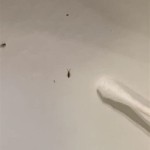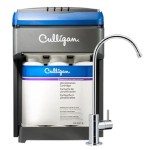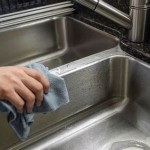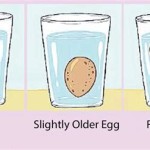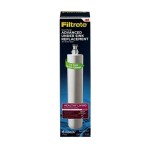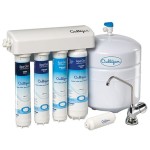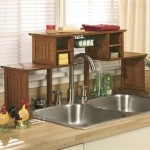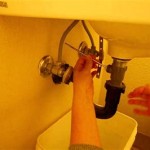How To Eliminate Gnats From Your Sink
Gnats, those tiny, irritating flying insects, are a common household nuisance, often found buzzing around sinks, drains, and other damp areas. Their presence indicates an underlying problem, typically a source of decaying organic matter that serves as both food and breeding ground. While commercially available insecticides might offer a quick fix, addressing the root cause is paramount for long-term gnat control. This article outlines several methods to effectively eliminate gnats infesting your sink and prevent their return.
Identifying the Culprit: Understanding Gnat Biology and Attraction
Before embarking on a gnat eradication mission, it is crucial to correctly identify the type of gnat plaguing the sink. Several small fly species are commonly mistaken for gnats. The most frequent offenders around sinks are drain flies (also known as moth flies or sewer flies), fruit flies, and fungus gnats. Each species has slightly different habits and preferred food sources, influencing the most effective control strategies.
Drain flies are characterized by their small size, fuzzy bodies, and moth-like wings. They are typically dark in color and often rest on walls near drains. Fruit flies, as the name suggests, are attracted to overripe fruits and vegetables, but they can also breed in stagnant water and decaying organic matter found in drains. They are usually tan or brown with red eyes. Fungus gnats, which are more commonly associated with houseplants, can also be attracted to damp environments and decaying organic matter in sink drains. They are small, dark, and have long legs.
Regardless of the specific species, these flies are generally attracted to moisture, humidity, and the smell of decaying organic matter. Leaks, spills, and food debris accumulating in sink drains create ideal breeding grounds. These conditions provide the necessary nutrients and moisture for larvae to develop and mature into adult flies. Understanding the specific factors attracting gnats is the first step in effectively eliminating them.
Deep Cleaning the Drain: Eliminating the Breeding Ground
The primary strategy for getting rid of gnats in a sink involves eliminating their breeding ground. This usually requires a thorough cleaning of the drain and surrounding plumbing. The goal is to remove any accumulated organic matter that provides sustenance for the larvae.
Begin by removing the drain stopper or screen. Use a tool, such as a bent wire or an old toothbrush, to dislodge any visible debris clinging to the stopper or screen. Rinse these components thoroughly under running water to remove any remaining residue. Next, focus on cleaning the interior of the drainpipe. Several methods can be employed:
Boiling Water: This is the simplest and often most effective method for clearing minor drain clogs and killing gnat larvae. Slowly pour a kettle or pot of boiling water down the drain. The hot water will help to dissolve grease and dislodge accumulated organic matter. Repeat this process several times, allowing the water to sit in the drain for a few minutes between each pour. The heat will also kill any eggs and larvae present in the drain.
Baking Soda and Vinegar: This is a natural and effective alternative to harsh chemical drain cleaners. Pour approximately one cup of baking soda down the drain, followed by one cup of white vinegar. The mixture will fizz and bubble, helping to break down organic matter clinging to the drain walls. Allow the mixture to sit for at least 30 minutes, or preferably overnight. After the waiting period, flush the drain with hot water for several minutes to remove the loosened debris.
Commercial Drain Cleaners: If boiling water and baking soda/vinegar are insufficient, consider using a commercial drain cleaner specifically designed to break down organic matter. Follow the manufacturer's instructions carefully, as these products can be corrosive and harmful if misused. Exercise caution when using commercial drain cleaners, as they can damage plumbing if used improperly. Wear appropriate protective gear, such as gloves and eye protection, to avoid skin and eye irritation.
Drain Snake or Auger: For more stubborn clogs, a drain snake or auger can be used to physically remove the accumulated debris. Insert the drain snake into the drain and rotate it to break up and dislodge the clog. Carefully remove the snake, cleaning off any debris that is pulled out. Repeat this process until the drain is clear. This method is particularly effective for removing larger pieces of hair, food scraps, and other solid materials that boiling water or chemical drain cleaners may not be able to dissolve.
After cleaning the drain, it is essential to maintain its cleanliness to prevent future gnat infestations. Regularly flush the drain with hot water after each use to prevent the buildup of food debris and grease. Consider using a drain strainer to catch food particles and other solid materials that could contribute to clogs. Periodically repeat the cleaning process described above to ensure that the drain remains free of organic matter.
Trapping Adult Gnats: Reducing the Population
While cleaning the drain eliminates the breeding ground, it is also necessary to address the adult gnat population. Trapping adult gnats can significantly reduce their numbers and prevent them from laying more eggs. Several different types of traps can be used, ranging from simple homemade solutions to commercially available options.
Apple Cider Vinegar Trap: This is a simple and effective homemade trap that attracts gnats with the sweet scent of apple cider vinegar. Pour a small amount of apple cider vinegar into a shallow dish or jar. Add a few drops of dish soap to break the surface tension of the vinegar. Cover the dish with plastic wrap and secure it with a rubber band. Poke small holes in the plastic wrap. The gnats will be attracted to the vinegar, enter the trap through the holes, and become trapped in the soapy solution. Replace the vinegar solution every few days or as needed.
Wine Trap: Similar to the apple cider vinegar trap, this method utilizes leftover wine to attract gnats. Pour a small amount of wine into a glass or jar. Add a few drops of dish soap. The gnats will be drawn to the sweet scent of the wine and become trapped in the soapy solution. Replace the wine solution every few days or as needed.
Sticky Traps: These traps are coated with a sticky adhesive that traps gnats upon contact. They are available in various forms, including strips, cards, and rolls. Hang the sticky traps near the sink and other areas where gnats are observed. Replace the traps when they become covered with insects. Ensure that sticky traps are placed out of reach of children and pets to prevent accidental contact.
Electric Bug Zappers: These devices use ultraviolet light to attract insects and then electrocute them. While effective at killing adult gnats, bug zappers can also attract and kill beneficial insects. Consider the potential impact on the surrounding environment before using a bug zapper. Bug zappers can be effective in reducing the overall insect population, but they are not always the most targeted solution for gnat control.
When setting up traps, it is important to place them strategically in areas where gnats are most active. This includes near the sink, drains, and other damp areas. Regularly check and empty the traps, replacing the bait or adhesive as needed. Combining trapping with other gnat control methods, such as drain cleaning, provides a comprehensive approach to eliminating these pests.
Preventive Measures: Maintaining a Gnat-Free Environment
Once the gnat infestation has been eliminated, it is crucial to implement preventive measures to avoid future outbreaks. Simple changes to cleaning habits and environmental management can significantly reduce the likelihood of gnats returning.
Regular Drain Cleaning: As previously mentioned, regularly cleaning the drain is essential for preventing gnat infestations. Flush the drain with hot water after each use to remove food debris and grease. Periodically use the baking soda and vinegar method or a commercial drain cleaner to break down any accumulated organic matter. Consistent drain cleaning is the most effective way to prevent gnat breeding.
Eliminate Standing Water: Gnats thrive in damp environments. Eliminate any sources of standing water around the sink and in the surrounding area. Fix any leaky faucets or pipes immediately. Ensure that drip trays under potted plants are emptied regularly. Reducing moisture levels will make the environment less attractive to gnats.
Proper Food Storage: Fruit flies are particularly attracted to overripe fruits and vegetables. Store fruits and vegetables in the refrigerator or in airtight containers to prevent them from attracting gnats. Dispose of overripe fruits and vegetables promptly. Regularly clean countertops and other surfaces to remove any food residue that could attract gnats.
Proper Waste Disposal: Empty trash cans regularly, especially those containing food waste. Use trash cans with tight-fitting lids to prevent gnats from accessing the contents. Clean trash cans regularly to remove any lingering odors or food residue. Proper waste disposal is essential for preventing gnat infestations.
Ventilation: Ensure that the kitchen and bathroom are well-ventilated to reduce humidity levels. Use exhaust fans when cooking or showering to remove excess moisture from the air. Good ventilation can help to create an environment that is less favorable to gnats.
By implementing these preventive measures, it is possible to maintain a gnat-free environment and avoid future infestations. Consistent cleaning and environmental management are key to long-term gnat control.

7 Effective Methods To Get Rid Of Fruit Flies In Your Drains
How To Get Rid Of Gnats Drain Flies Fruit And Fungus

How To Get Rid Of Drain Flies 6 Expert Tips Truly Blog

4 Ways To Get Rid Of Drain Flies Wikihow

Easy 3 Second Fix For Drain And Fruit Flies

The Ultimate Guide To Getting Rid Of Drain Flies

How To Get Rid Of Drain Flies 6 Expert Tips Truly Blog

4 Ways To Get Rid Of Gnats In The Kitchen Wikihow

How To Get Rid Of Gnats In Your Home

5 Easy Ways To Get Rid Of Drain Flies Fast
